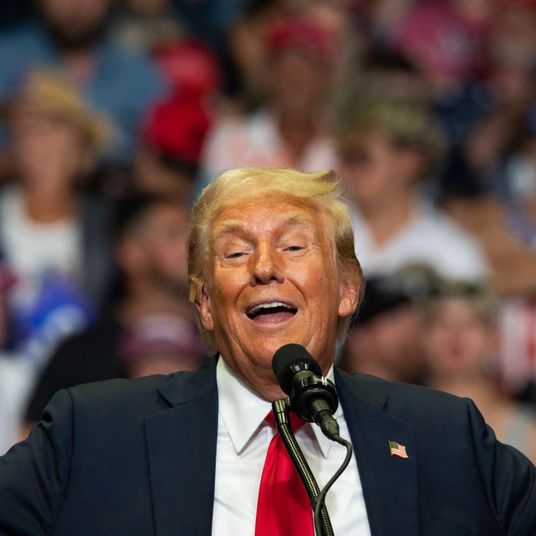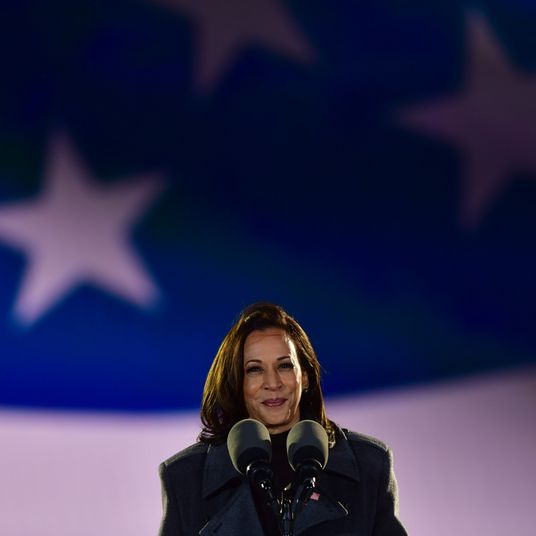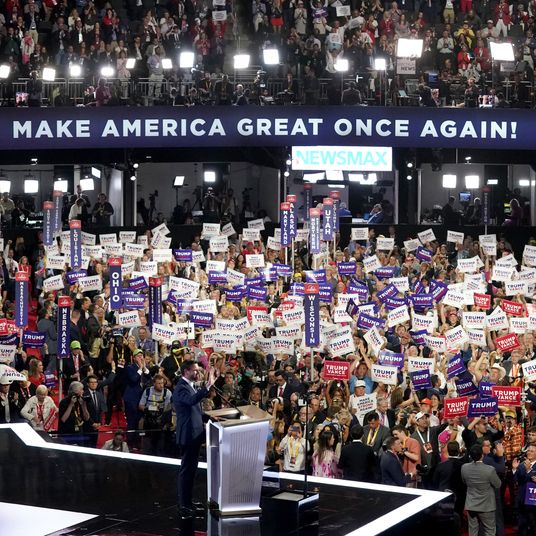
A sense of fatigue has creeped into the American economy. Haven’t we done enough for you, Jerome Powell?, Wall Street seems to be asking the Federal Reserve chair. Look around: Inflation is falling. The economy is expanding. Wages are rising faster than inflation. Yes, there have been a lot of layoffs recently, but the unemployment rate is still low. Even Ken Griffin, the hedge-fund billionaire looking to remove Joe Biden from the White House, had to admit that “the overall economy looks pretty damn good right now.” In fact, the U.S. has the world’s leading major economy, in terms of growth.
But it wasn’t just the bankers and bond traders — Sherrod Brown, the Democratic senator from Ohio, urged the Fed to start cutting, saying in a January 30 letter that “it is becoming increasingly evident that restrictive monetary policy is no longer the right tool for combatting inflation.” Treasury secretary (and former Fed chair) Janet Yellen joined the chorus, at least when it came to calling it on inflation. For the past six months, the Fed has kept interest rates higher than they’ve been in 23 years. It’s a long (though hardly unprecedented) stretch of time to hold rates as restrictive as they’ve been, especially when things have been going so well.
On Wednesday, Powell essentially responded with this: No, he is not satisfied, and beatings will continue until morale improves. At 2 p.m., the Fed released a statement, saying it “judges that the risks to achieving its employment and inflation goals are moving into better balance,” but then, in the next sentence, that the “economic outlook is uncertain, and the Committee remains highly attentive to inflation risks.” The inflation rate was still too far away from its 2 percent goal. Powell said he wants “more data,” even after acknowledging that things are good. “We’re not declaring victory at all at this point. We think we have a ways to go,” he said. Following Powell’s press conference, the Dow Jones Industrial Average took a small tumble upon hearing that the mood inside the Fed is still cautious, even if much of the outside world is not.
Over the weekend, economics writer and former Barron’s columnist Matthew C. Klein asked a question that got right to the main problem facing the Federal Reserve today: “The U.S. Economy is Roaring. Why Should Rates Come Down?,” he wrote. (A few days later, the New York Times would pose substantially the same question.) The Fed has been engaged in all-out war to keep inflation low since March 2022, but at some point, wars are supposed to end. In theory, high interest rates have a corrosive effect on the economy — they make borrowing more expensive, which, in turn, makes it harder for people to pay for food and housing and keeps businesses from hiring.
The galaxy-brained conundrum here is, what if this level of interest rates is actually holding the economy together? In 2023, when the Fed was hiking its rates, it did so at a pace that was substantially slower than in 2022. Part of the reasoning behind this was because the inflation rate was already starting to dip and didn’t need to be fought so aggressively anymore. But it was also because of the risk of overshooting — essentially, jamming rates up to a level so high that it would tip the economy into a recession and spike the unemployment rate. The argument for keeping things as they are is because, well, nothing is really breaking, at least not yet.
The same kind of logic follows if interest rates fall too quickly, too. “We know that reducing policy restraint too soon or too much could result in a reversal of the progress we’ve seen on inflation, and ultimately require even tighter policy to get inflation back to 2 percent,” Powell said during his press conference. Or at least, it would in normal times. Inflation has been anthropomorphized as a kind of wolf at the door, a threat that will return once vigilance starts to flag. Remember, the Fed was caught off guard by inflation back in 2021, and that has — fair or not — defined the Powell-era central bank’s reputation since.
There is a real fear that the job is not done, and that the sustained high prices in, for example, residential real estate, services, and car sales could mean that a broader price spiral could return if rates came down substantially. “We have six months of good inflation data,” Powell said during a Wednesday press conference. “The question really is that six months of good inflation data, is it sending us a true signal that we are in fact on a sustainable path down to 2 percent? Inflation?” Of course, inflation is not some wild animal — it’s an economic phenomenon, though one that’s poorly understood. Still, we kind of know what caused it, and the supply-chain shocks and pandemic-era stimulus money that have reasonably been blamed for the prolonged spike in everyday prices have largely washed out of the economy.
Powell did hint that there was another potential scenario at play, though, and that was a kind of malaise. “The greater risk is that it [inflation] would stabilize at a level meaningfully above 2 percent,” he said.
The real debate that’s going on now boils down to not if the Fed will cut rates, but when. In December, the last time the Fed made an interest-rates announcement, its board of governors predicted that the central bank would cut rates three times in 2024. Wall Street’s biggest banks had expected even more at the time, though they’ve moderated somewhat.
Wall Street’s betting markets think that the next rate cut will come in May. (“I don’t think it’s likely” that the Fed would cut in March, the Fed chair said, all but confirming that expectation.) But that could change. “If we saw an unexpected weakening in the labor market, that would certainly wait on cutting sooner,” he said, in one of the few speculative statements he allowed during the press conference. “If we saw inflation being stickier or higher, those sorts of things would argue for moving later.” But absent some huge surprise in the coming months, he’s going to have fewer and fewer reasons to keep delaying rate cuts that the financial world keeps asking for.





























